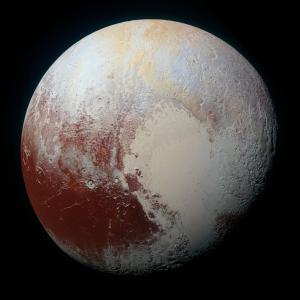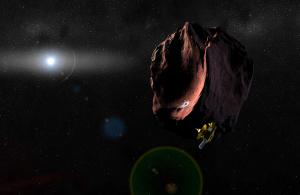
Summer Stargazing Nights
- Where:
- Frosty Drew Observatory
- When:
- Friday July 15, 2016 at 7:30 p.m.
- Cost:
- $1 Suggested Donation per Person
Tonight is Stargazing Night at Frosty Drew Observatory and we can expect mostly clear skies with periodic bouts of clouds during twilight hours. Forecasts are calling for fog overnight compliments of today’s super high temps and humidity, though largely outside of our viewing times. The bright 82% waxing gibbous Moon will be with us until the wee morning hours and will offer up fabulous views, even under light fog, if it decides to sneak in early. Though clearer skies will certainly allow for telescopes to rock, we will miss out on views of the fabulous Milky Way with moonlight out shining the striking arms and dust lanes of the galaxy.
We will open the Observatory, Sky Theatre, and Nature Center at 7:30 tonight. In the Observatory, telescopes will focus on sunset views of Jupiter with the four Galilean Moons becoming visible as twilight sets in. The Moon will rock the skies all night sitting just 3° above Saturn. As the night sets in we will have Saturn on display in the big telescope with views of the Moon, binary stars, and Mars in telescopes setup around the Observatory courtyard. At the Lunar Lounge, check out a large live projection of the lunar surface, or a photo tribute to the NASA New Horizons mission at Pluto. Inside the Sky Theatre we will feature a showcase of celestial objects photographed at Frosty Drew Observatory were temps will be cool and dry. The Nature Center will be open until 10:00 p.m. with Frosty Drew Naturalists on hand to show off the daytime side of Frosty Drew. We will stay open until midnight, after which the bright Moon will chase us out.
Overall, tonight will be a great night to be out if the Moon is your digs. Excellent views of the cratered lunar surface will be easily visible in our telescopes as well as the rings of Saturn, the Moons of Jupiter, and many binary stars showing off their fabulous colors. If you’re hoping to catch views of the Milky Way stretching overhead, you will want to sit this one out as the Moon will steal the show. Considering we have had tough weather to deal with on Fridays this year, I would consider any chance to check out the sky a good opportunity. Mosquitoes will be in full out feast mode tonight making that awesome summer outfit gift wrap for the incoming swarm. Jeans, sleeves or a nice slathering of mosquito repellent will help keep you off the menu. Hey, geek out with the Moon at Frosty Drew, tonight
-------------------------------------------------------------------------
Weekly Happenings
Scott MacNeill
Yesterday, July 14, marked the one year anniversary of the NASA New Horizons iconic flyby of dwarf planet Pluto. One year later we are are still receiving images and science data from that amazing day. A day that forever changed our view of the little world over 3 billion miles away.
Taking ten years to reach Pluto, at speeds of 30,800 mph, New Horizons flew past Pluto at a distance of 7,800 miles. After a planned 22 hour period of communications black out on July 14, 2016, New Horizons phoned home with loads of readings, images, and science data to send. Though at 3 billion miles distant, it takes 4.5 hours for light to reach Earth. So data transmit from New Horizons takes 4.5 hours to arrive with transmission rates averaging about 1 kbps. For the past year New Horizons has been sending science data sets and images collected during the flyby with nearly 80% already received here on Earth. The remaining 20% should be on Earth by October 2016.
Discoveries abound among the loads of data coming in, discoveries that have changed our understanding of the Pluto system and planetary science in general, with troves of secrets just waiting to be discovered. Thanks to the New Horizons flyby, we now know that the 621 mile wide, heart shaped nitrogen glacier on Pluto is the largest known glacier in the Solar System; Pluto has a blue atmosphere; young surface features on Pluto hint at recent geological activity; Pluto may have an internal water-ice ocean; Pluto’s moons, that can be age dated using surface craters, all appear to have similar ages, boosting the theory that the moons were formed at the same time from a collision with Pluto and another Kuiper Belt Object; and there is evidence of liquids previously on Pluto’s surface, placing it in a very small class of solar system bodies with a history of surface based matter in a liquid state (e.g. Earth, Mars, Titan).
Next steps for New Horizons include the completed transmission of all science data collected during the Pluto encounter, then an excursion into the Kuiper Belt. Home to Pluto, the Kuiper Belt is loaded with thousands solar system bodies ranging from asteroids to dwarf planets, called Kuiper Belt Objects (KBOs), and is a region of the Solar System that we have a minimal understanding of. Over the past year, four course corrections were made on New Horizons, placing it on track for a January 1, 2019, flyby of KBO 2014 MU69, a classical Kuiper Belt Object residing 4 billion miles distant.
New Horizons was the first mission of NASA New Frontiers program and certainly quite the flagship of that program to date! The images and discoveries of Pluto have been mind boggling and many more are just around the corner. As we continue our Pluto buzz over the next couple years we will ramp up again for another iconic flyby, this time of a distant Kuiper Belt Object, compliments of the New Horizons mission.
Catch up with the discoveries, images, and hype of the amazing New Horizons mission.
Save the Date:
An Evening Under the Stars: A fund raiser for the Frosty Drew Observatory – Saturday, July 23, 2016
Under the Perseid Meteor Shower: Thursday, August 11 – Saturday, August 13, 2016.
-Scott


